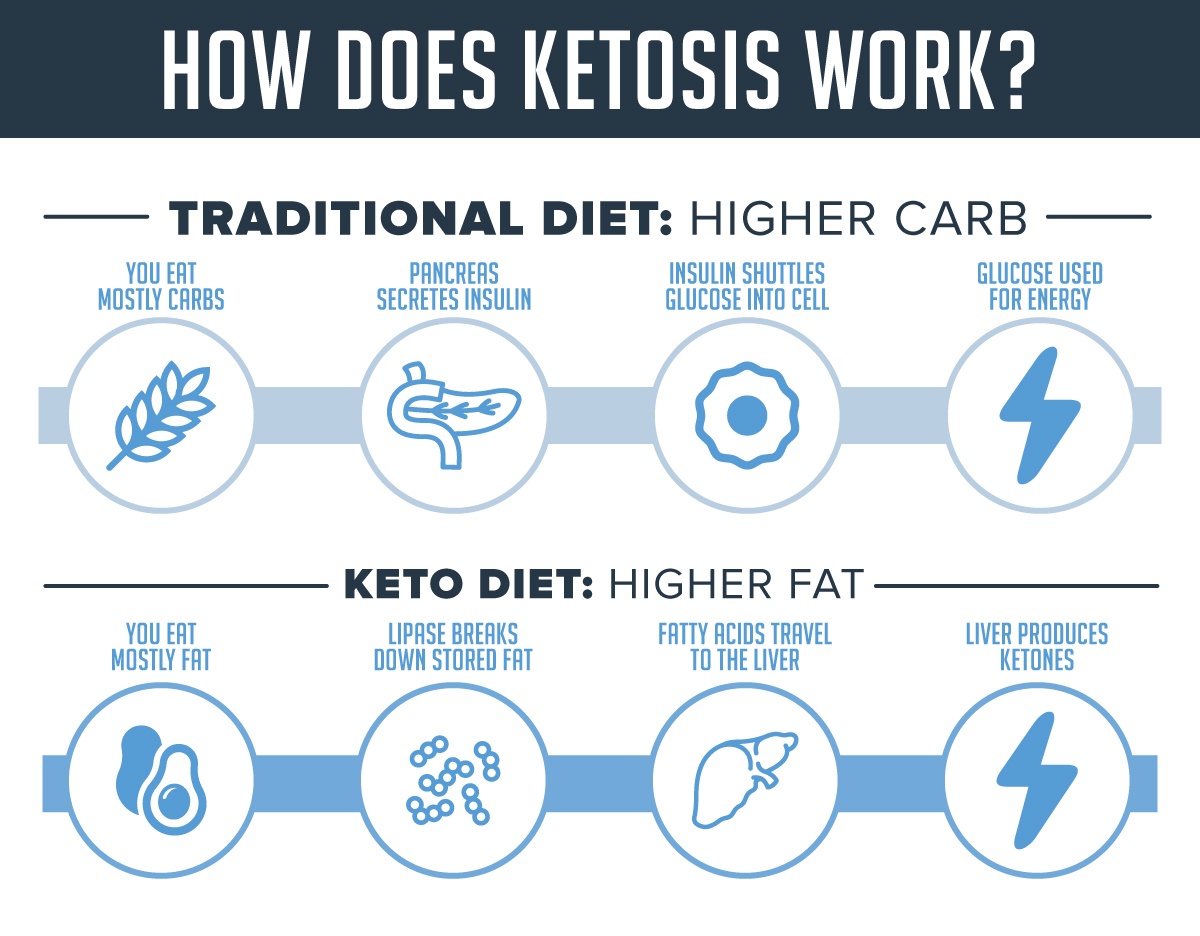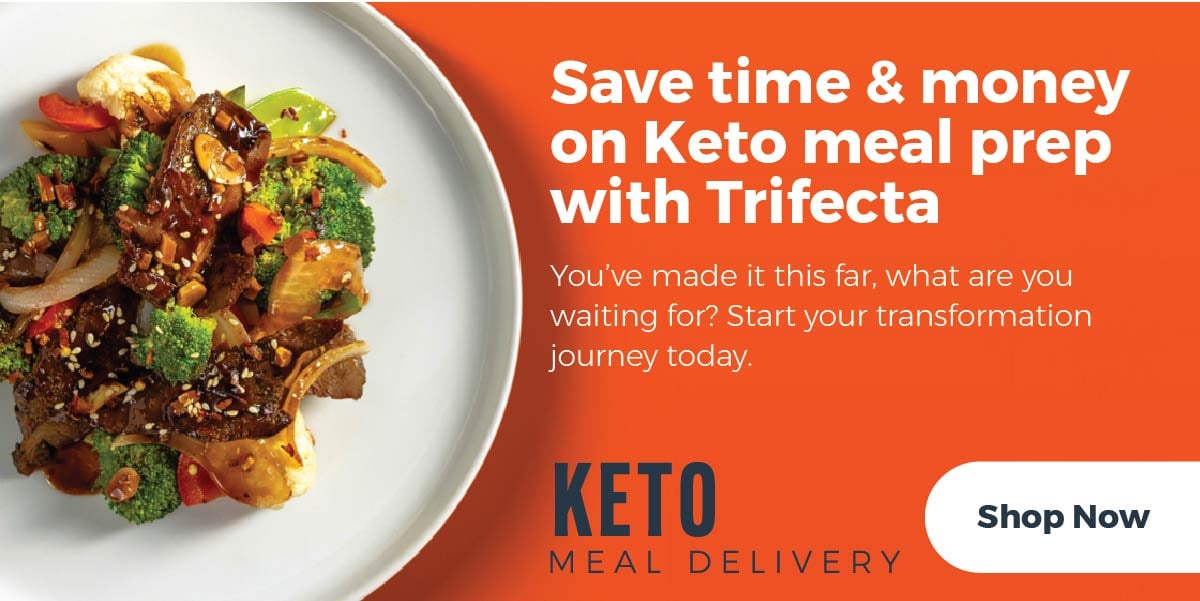3. Eat Medium Chain Triglycerides (MCT)
Unsaturated fats from plant-based sources have long been touted as the best sources of healthy fats and should be prioritized on any diet, including keto. But when it comes to ketosis, a certain type of saturated fat called MCT (medium chain triglycerides) may offer additional benefits.
MCTs come from plant-based saturated fats like coconut and palm oil, as well as grass-fed dairy sources like goat milk, cheese, yogurt, kefir, butter, and ghee. You can also purchase MCT oil supplements.
Unlike other fatty acids, MCTs do not require additional compounds to be digested and utilized for energy (14,15). Similar to how carbohydrates can be an immediate source of glucose, MCTs can be quickly absorbed and turned into ketones for fuel. And unlike carbs, MCTs do not affect blood sugar levels.
Their ability to form a rapid source of ketone bodies is ideal for someone on a ketogenic diet, especially during times when fast energy is needed—like during physical activity or exercise (15,16). Their rate of absorption may also aid in speeding up ketosis by promoting more ketone body formation.
4. Try Intermittent Fasting
Fasting for 24 hours for up to 3 three days is another way to get into ketosis quickly. However, this practice is not only difficult but unsustainable long-term.
Intermittent fasting or fasting for shorter windows is often discussed as an option to promote faster ketosis and strengthen the overall benefits of a keto diet (17).
It would make sense in theory that not eating for extended periods of time would help deplete glycogen stores, reduce overall carb intake, and promote more fat utilization for energy, but this all really depends on what your overall diet looks like.
Similar to most other diets, intermittent fasting is effective as another way to organize your calories to promote an overall caloric deficit. And with any fasting pattern, a deficit is only created when food choices are kept in control—not eating for fourteen hours is not a license to eat as much of whatever you want for your 10-hour window. Especially if you are trying to stay in ketosis!
But still, fasting may be the best method for some who have a hard time controlling their intake. At the end of the day, the best diet for you is one that you can stick to!
Moreover, with a focus on quality, nutritious foods, and calorie control, many may find that intermittent fasting is just what they need to manage their weight, appetite, and blood sugar levels.
5. Exercise More
Exercise can also help put you into ketosis more quickly by using up available glucose stores. Prolonged exercise or more slow-paced endurance sports (like cycling, swimming, jogging, etc.) also force you to switch to fat as a primary source of fuel, which can further support a ketotic state (18).
But not all types of exercise are sustainable without carbs. If you are participating in heavy training, high-intensity conditioning, or heavy lifting throughout the week, you might need to add some additional carbs to maintain your strength and output.
If you are an athlete or very physically active, consider adding some additional carbs (15 to 30 grams) before HIIT or heavy strength training to support your energy needs.
6. Supplement with Exogenous Ketones
Some research suggests that ketone supplements can also increase the rate at which you go into ketosis and create a ketotic state even without following a ketogenic diet (19). However, this approach is thought to be beneficial when MCTs are included.
Of course, this approach should not be a permanent substitute for a well-rounded keto diet. It is the actual act of diet-induced ketosis and carb restriction that many pro keto individuals claim is beneficial to this unique style of dieting (20,21,22).
But if you are looking to increase your level of ketones to promote ketosis quickly, a ketone supplement paired with MCT oil may be worth considering.
How Long Does it Take to Get Into Ketosis?
The rate at which you can get into ketosis depends on your activity level, body type, and overall diet.
Cutting carbs for a day isn't going to flip the switch. Your body has been running off sugars your whole life and needs time to adjust. Part of this process requires you to deplete your reserve of carb fuel (glycogen stores).
And the number of stored carbs you have can differ from one person to the next depending on how many carbs you typically eat each day and your overall muscle mass. You store these carbs in your muscles, so more muscle means more storage! Your level of physical activity also plays a role—the more you are exercising, the quicker you will run out of glycogen.
In healthy individuals who have just started the ketogenic diet, it usually takes two days to burn through glycogen. But taking all of the individual variables into account, the time frame to get into ketosis is most often quoted between 1-7 days.
How to stay in Ketosis
The easiest way to stay in ketosis is to stick to your ketogenic diet and continue to keep your carb intake low. Make sure you are tracking your daily macros using a macro tracking app, like Trifecta, and limit your keto cheat days!
Consider using a meal delivery company that does all the hard work for you. Trifecta's keto meal plan will not only help you cut carbs but it's loaded with nutrient-rich foods and healthy fats to keep your overall diet and nutrition on track.
Ready to make your keto diet a breeze?



